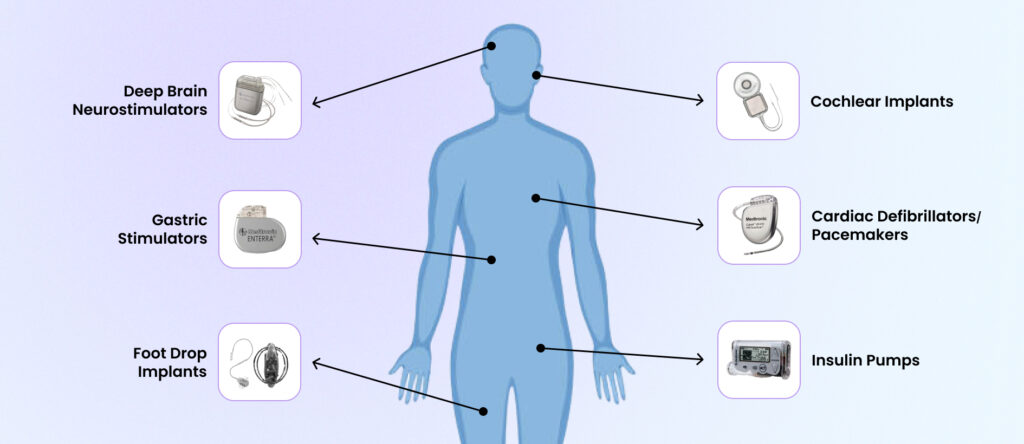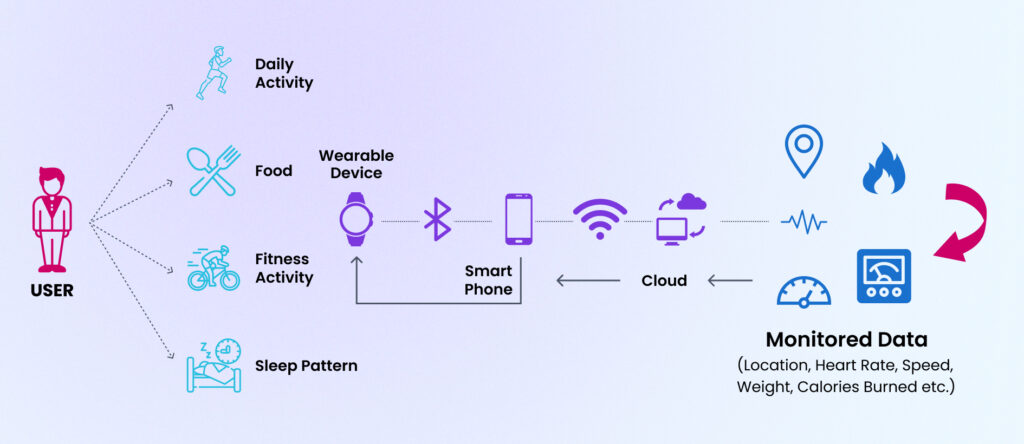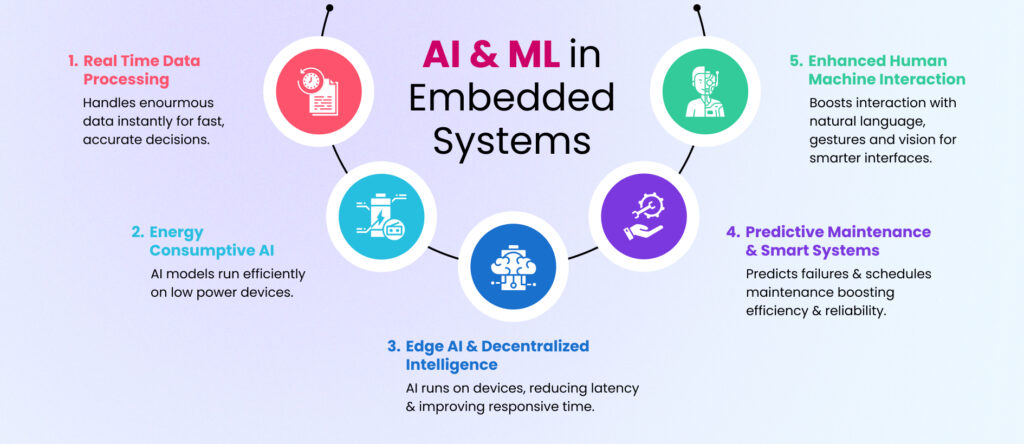Introduction
The healthcare industry has seen significant transformation in recent years for multiple reasons, the main one being the advancement of technology. Modern medical gadgets incorporate embedded systems, which is one component of this development. The development of innovative medical solutions depends on these hardware- and software-based systems. They are boosting healthcare through increasing patient care, facilitating real-time data analysis, and augmenting the ease, effectiveness, and customization of therapy.
The Evolution of Medical Devices
Medical devices have come a long way from their early mechanical counterparts. In the past, medical instruments were usually quite sizeable and had limited scope. With the development of digital technology, some changes came in. The pacemaker along with other advanced embedded systems were considered the breakthrough that helped in the development of miniaturization and enhancement of medical devices. The development of the first digital pacemakers and blood pressure monitors inductively laid the grounds for even more advanced devices to be made after that.
The first implantable pacemaker came around in the 1950s, while modern pacemakers that came after incorporate embedded systems into their tasks and can adjust in response to individual patients’ requirements.

Key Developments in Medical Devices Relating to Embedded Systems
Embedded systems play a crucial role in the medical device industry, driving advancements in diagnostics, treatment, and patient care. The following are key developments in medical devices enabled by embedded systems:
Wearable Health Monitors
Healthcare’s most visible impacts of embedded systems are the rise of wearable health monitors. Fitness bands, smart watches, and continuous glucose monitors are already in the market. These devices have embedded systems that capture and process health information in real-time and relay it back to the users immediately on their health status.
Example: Apple Watch and Fitbit are fitness devices with built-in sensors that track heart rate, steps taken, sleep patterns, and other data. They also collaborate with healthcare apps to help people take better care of their health.

Implantable Devices
Implantable medical devices, including cochlear implants, pacemakers, and neurostimulators, have undergone a revolution because to embedded systems. These gadgets constantly monitor and adapt to the body’s needs, ensuring dependability and patient safety.
Example: Implantable neurostimulators from Medtronic are used to electrically stimulate the nervous system in order to relieve chronic pain.
Diagnostic and Imaging Equipment
Diagnostic and imaging equipment, including MRI machines, ultrasound devices, and portable X-ray units, have seen significant advancements due to embedded systems. These systems enhance precision and processing speed, leading to quicker and more accurate diagnostics.
Example: GE Healthcare’s MRI scanners use embedded systems to generate detailed images of organs, tissues, and bones, revolutionizing the way doctors diagnose and treat diseases.
Case Studies
Case Study 1: Pacemakers‘ Evolution
The pacemaker instance serves as an example of how embedded technologies are progressively altering the medical device landscape. For example, pacemakers were originally intended to be used to correct cardiac rhythms, but with the advances in embedded systems today, they may also serve as a means of data transfer, memory storage, and even communication between the patient and their doctor.
Example: The Medtronic Micra pacemaker utilizes remote control monitoring and connection with healthcare systems to enhance patient comfort and safety. It can be implanted inside the body without the need for leads.
Case Study 2: Wearable ECG Monitors
Wearable ECG monitors are another example of how embedded systems have democratized healthcare. These devices enable continuous monitoring of heart activity and can send real-time data to doctors, increasing the accessibility and accuracy of heart health monitoring.
Example: The KardiaMobile ECG device by AliveCor is a small, portable device that can record a medical-grade ECG in 30 seconds.
The Future of Embedded Systems in Medical Devices
The Rise of AI and Machine learning in Embedded Systems

The design and use of embedded systems across sectors is being revolutionized by AI and ML. Their incorporation into embedded systems creates new avenues for efficiency, intelligence, and automation. Notable advancements in this field include:
1. Real-Time Data Processing: Embedded systems can handle enormous volumes of data in real time thanks to AI and ML algorithms. Applications where split-second judgments are crucial, such as robotics, autonomous vehicles, and smart medical devices, require this capacity. Embedded systems are now capable of acting with never-before-seen speed and accuracy, decision-making, and sensor data interpretation.
2. Energy-Consumptive AI: Energy consumption is a significant issue for embedded systems driven by AI. AI is becoming more accessible thanks to the development of AI accelerators, edge computing, and optimized hardware, which enable embedded devices to execute sophisticated AI models on less power, making AI more feasible in battery-operated devices such as wearables, drones, and IoT devices.
3. Edge AI and Decentralized Intelligence: AI models are increasingly being pushed to the edge, meaning they run directly on embedded devices rather than relying on cloud-based processing. This reduces latency, improves response times, and minimizes bandwidth usage, making edge AI crucial for applications like real-time monitoring, industrial automation, and autonomous systems.
4. Enhanced Human-Machine Interaction: AI enables embedded systems to enhance human-machine interaction through natural language processing, gesture recognition, and computer vision. This will improve interfaces in consumer electronics, home automation systems, and assistive technologies for individuals with disabilities.
5. Predictive Maintenance and Smart Systems: Embedded AI systems in industrial settings can predict equipment failures and suggest maintenance schedules, reducing downtime and improving operational efficiency. This concept of predictive maintenance is extending to smart buildings, transportation, and even medical devices, where AI-driven insights lead to improved system performance and reliability.
Both embedded systems in medical devices and the rise of AI and ML are shaping the future of innovation, making systems more intelligent, efficient, and responsive across industries.
Conclusion
Modern medical gadgets are not possible without embedded systems, which are transforming healthcare through increased precision, efficiency, and personalization. These medical advances, which range from robotic surgery equipment to wearable health monitoring, are transforming the field and boosting patient outcomes. The importance of embedded systems will only grow as technology develops further, opening the door to more intelligent, easily accessible, and efficient healthcare in the future.
| Serial No. | Related Blogs | Links |
|---|---|---|
| 1. | The Future Scope of Embedded Systems : Trends and Predictions | Click Here |
| 2. | Difference Between Embedded System and IoT | Click Here |
| 3. | The Future Of Intelligence At The Edge: Explore AI & ML With Emterxe | Click Here |
People Also Ask (PAA)
Embedded systems improve the safety of medical devices by enabling real-time monitoring, automatic error detection, and fail-safe mechanisms.
They enable continuous monitoring and real-time analysis in wearable devices, providing early warnings for conditions like heart disease or diabetes.
Yes, many embedded systems support remote updates, allowing software improvements and security patches without requiring device replacement.
